With dozens of cameras now featuring advanced video capabilities the choice of models can often be confusing. To make things clearer we explore the major factors to consider when choosing the best cameras for video. In this guide we’ll tell you what features you’ll need as well as a few must-have accessories.
In late 2008 the launch of the groundbreaking Canon EOS 5D Mark II DSLR ushered in a new era of filmmaking thanks to its Full HD 1080p video shooting. It blurred the lines between using DSLRs as stills cameras and traditional video cameras. Over a decade later the array of cameras offering the much higher resolution 4K shooting – and even Cinema 4K (at 4096×2160 pixels) – is quite astonishing.
So how should you go about choosing the best camera for shooting video – whether it’s a DSLR, mirrorless, compact, bridge, action cam or drone? This guide examines how to navigate your choices in order to make the best camera selection for your video shoots.
Camera types
Most current mirrorless and the best DSLR cameras shoot video and many can capture UHD 4K or 4K DCI. If you’re looking for a single camera solution that shoots still photos and video, these tend to be a good choice. DSLR cameras are designed for optical viewing of the image through your lens, and thus incorporate a mirror that must be locked up out of the way to shoot video. This requires a Live View feature and an LCD screen to see what you are shooting.
Mirrorless cameras, on the other hand, have no mirror to lock up and use Live View by default. Good examples of mirrorless cameras for video include the Sony A7S and A7 series, the Panasonic LUMIX series (including the GH5/S and the GX80) and the Blackmagic Pocket Cinema Camera 6K. For a wider range of options, check out our guide to the best mirrorless cameras.
Interchangeable lens DSLRs like the Nikon D7500 and the Canon EOS 250D / Rebel SL2 are mainly designed for stills photography, but they are one of the most affordable ways to get into creative 4K filmmaking. They are among the best APS-C cameras, and their sensor and diversity of lenses makes it easy to shoot ‘cinematic’ shallow focus shots. The downsides are you may need accessories to get the best out of them, they’re slower to use than dedicated video cameras, and audio recording can be tricky. If shooting in 4K is important to you and you have a bit more budget, check out our guide to the best 4K cameras for video.
Large-body ‘prosumer’ camcorders, such as the Canon XA45, have built-in zoom lenses and headphone sockets. They’re faster and easier to use than DSLRs and mirrorless cameras, so they’re good for shooting news and events, but they have fairly small sensors. That means they aren’t as good in low light, and you can’t get as creative with shallow focus. Cameras like Sony’s AXC700 and the Canon GX10 have larger one-inch sensors and can shoot UHD 4K video.
If capturing fast action is one of your shooting priorities then action cameras may be a great choice as a B-camera. These little cameras are tough and can be mounted on bikes, helmets, cars, your body, or even animals. Most of them don’t have screens but the more expensive ones let you monitor the image with a wireless monitor or an iPhone or Android app.
The best current cameras include the GoPro Hero7 Black (which shoots 4K video at 60fps and 1080 video at up to 240fps) on up to the current GoPro Hero10 Black, as well as the DJI Osmo Action, which also delivers 4K video and a host of other intriguing features.
Many of us have now eschewed investing in traditional cameras by shooting and editing video on tablets and smartphones. Smartphones are discreet and portable, and some of them can shoot great video in the right conditions, but you must remember that such footage won’t be as good as what you’ll get from a camera with dedicated video features.
For the purposes of this guide, we won’t recommend pro and digital cinema video cameras and dedicated cinema cameras, such as the Canon Cinema EOS system. These, of course, are among the best cameras for video that you can buy, but they are very expensive and it’s unlikely that you’ll need such cameras until much later in your filmmaking career. If you are interested in pro and digital cinema video, camera brands to look out for include Panasonic, Sony, Canon, JVC, ARRI, Blackmagic Design, RED and AJA.
How much should a camera for video cost?
As with any equipment purchase, it’s best to start off with a defined budget. It seems obvious, but always keep in mind if you have £500 to spend on a camera body, try to keep to that and examine the best options for that price point. You might also want to consider the secondhand market if you’re looking to get a bit more ‘bang for your buck’. Retailers like MPB offer great trade-in rates on your old gear, which you can apply to the cost of your new camera.
Another key factor to consider is whether you want an ‘all-in-one’ camera with a built-in lens or if you are simply adding a video option to your system.
For example, if you have a mirrorless camera you might want to stick with that system but upgrade to the latest model with the most advanced video options. Long-term DSLR system devotees, such as Canon and Nikon users, will usually have a variety of lenses in their kitbags so will already have a variety of creative focal lengths to work with. Many DSLRs are also very capable tools for filming and can often be purchased at a discount these days. For a look at the options, check out our guide to the best DSLRs for video. The following guides might also help you find the best camera for your needs:
- Vlogging & Streaming: your ultimate guide
- Best cameras for vlogging
- Best mirrorless cameras for video
- Best action cameras for video
And if you’re budding content creator with designs on conquering social media, you might want to check out our guies to the best cameras for YouTube and best cameras for TikTok videos. For a deeper dive into the many different camera types and features available, check out our range of camera buying guides.
What are the best cameras for video recording?
Canon EOS R5
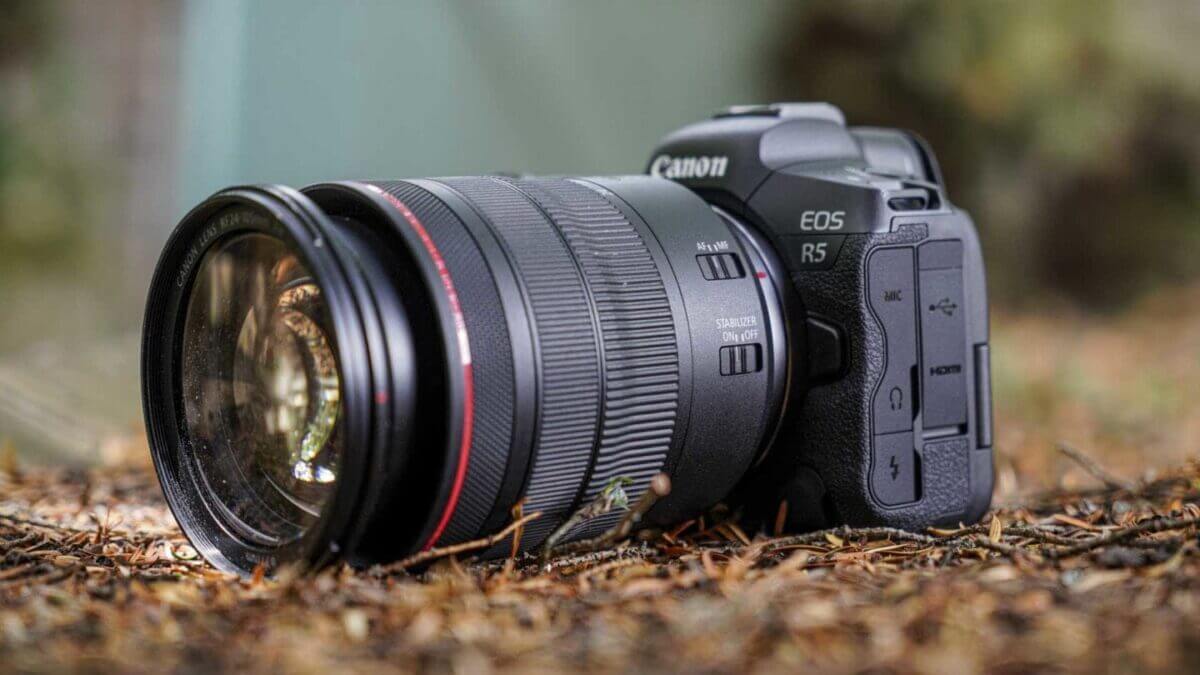
Specification
- Camera Type: Mirrorless
- Announced: 9th July 2020
- Sensor: 45Mp Full-frame Dual Pixel CMOS AF II
- Processor: Digic X
- Lens mount: RF
- Sensitivity range: Stills: ISO 100-51,200 expandable to ISO 50-102,400, Movies: ISO 100-25600, expandable to ISO ISO 51,200
- Metering: 384-zone metering with Evaluative metering (linked to All AF points), Partial metering (approx. 6.1% of viewfinder at centre), Spot metering: Centre spot metering (approx. 3.1% viewfinder at centre), Centre weighted average metering
- Shutter speed range: 1/8000sec-30 seconds and Bulb
- File formats: Raw + Jpeg/HEIF, MP4
- Maximum continuous shooting rate: Mechanical shutter: 12fps, Electronic shutter: 20fps
- Maximum video resolution: Uncropped, internal raw recording 8K video at up to 29.97fps in 4:2:2 10-bit in Canon Log (H.265) or 4:2:2 10-bit HDR PQ (H.265), Uncropped internal recording 4K video at up to 119.88fps in 4:2:2 10-bit in Canon Log (H.265) or 4:2:2 10-bit HDR PQ (H.265) 4:2:2 10-bit in Canon Log or 4:2:2 10-bit HDR PQ, 4K output over HDMI at up to 59.94fps
- Autofocus system: Dual Pixel CMOS AF II phase detection with 5940 points in stills and 4500 points in movie mode
- Viewfinder: 0.5-inch 5.76million-dot OLED electronic viewfinder with 120fps display and 0.76x magnification
- Screen: 3.15-inch 2.1-million dot vari-angle touchscreen
- Autofocus: Dual Pixel CMOS AF II with Advanced Animal AF (recognising dogs, cats and birds) supported in all video modes with 100% coverage and up to 1053 'AF segments'
- Stabilisation: In-body image stabilisation (IBIS) that works with lens IS and enables up to 8-stops of shutter speed compensation
- Storage: Dual slots, 1x CFexpress, 1x SDXC UHS-II
- Dimensions: 135.8 x 97.5 x 88mm
- Weight: 650 g / 738 g with card and battery
Although its position was technically usurped by the Canon EOS R3, the Canon EOS R5 is Canon’s flagship mirrorless camera and it was the most exciting camera announced in 2020.
Its 8K video capability stole most of the headlines when it was revealed, but the Canon R5 is at heart a 45Mp stills camera with an incredible autofocus system. This Dual Pixel CMOS AF II system has 5,940 selectable AF points and superb eye detection AF for humans, animals and birds that works in both video and stills mode.
Like the Canon EOS R6 announced at the same time, the EOS R5 has 5-axis in-body image stabilisation. In the R5 it enables shutter speed compensation of up to 8EV.
Canon pitches the R5 at around the same level as the Canon EOS 5D Mark IV, which means it’s designed for use by experienced enthusiast and professional photographers. It combines a healthy collection of button and dial controls with an excellent touch-control interface on the 3.15-inch 2.1-million dot vari-angle screen.
While 8K video is of limited appeal, the R5 is capable of producing superb results with the 4K HQ (High Quality) mode especially impressing. The still image quality is also excellent all the way up to around ISO 25,600.
Find the latest deals on the Canon EOS R5 at Amazon UK and Amazon US.
£4199
$3899For
- 45Mp full-frame sensor with full AF coverage
- 12fps/20fps continuous shooting with continuous AF
- Uncropped internal 8K video recording for up to 20 minutes
Sony A7S III
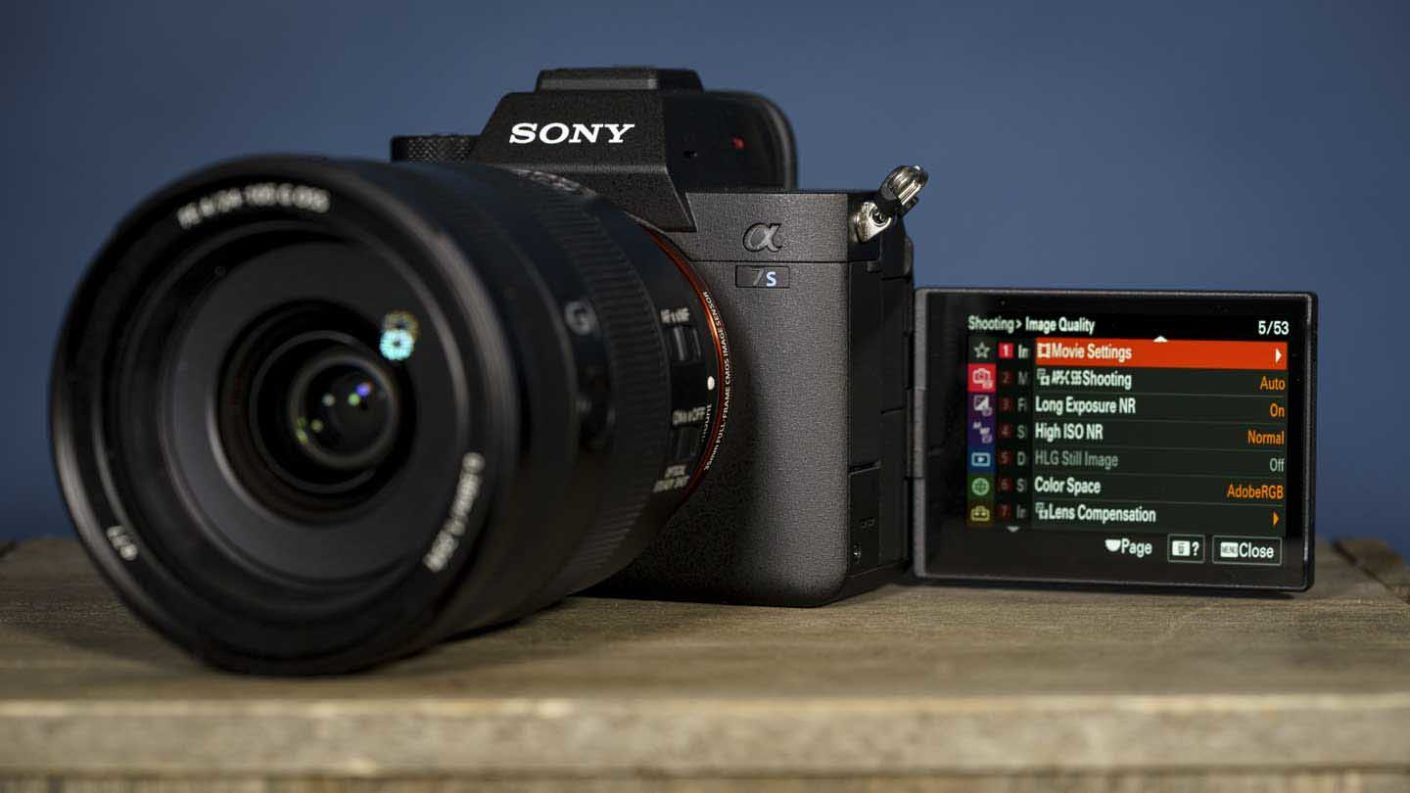
Specification
- Camera type: Full-frame mirrorless
- Announced: 28th July 2020
- Sensor: Full-frame 12.1Mp BSI CMOS
- Processing engine: Bionz XR
- Sensitivity: Video: ISO 80-102,400 expandable ISO 40-409,600. ISO base in S-Log is ISO 640 but it can be expanded down to ISO 160. Stills: ISO 80-102,400 expandable 40-409,600
- Autofocus system: Hybrid with 759 phase detection points and 425 contrast detection points, Real Time Eye AF (Human and Animal for stills, Human for video)
- Stabilisation: 5-axis IBIS and digital, up to 5.5EV shutter speed compensation
- Video resolution: 4K at up 120fps and 1080p at 240fps, 10-bit and 4:2:2 colour, 16-bit raw video over HDMI
- Video file formats: XAVC S,XAVC HS
- Video compression: XAVC S: MPEG-4 AVC/H.264, XAVC HS: MPEG-H HEVC/H.265
- 4K Video details: XAVC HS 4K 3840 x 2160 (4:2:0, 10bit, NTSC): 120p (200Mbps), 60p (150Mbps / 75Mbps / 45Mbps), 24p (100Mbps / 50Mbps / 30Mbps); 3840 x 2160 (4:2:0, 10bit, PAL): 100p (200Mbps), 50p (150Mbps / 75Mbps / 45Mbps); 3840 x 2160 (4:2:2, 10bit, NTSC): 120p (280Mbps), 60p (200Mbps / 100Mbps), 24p (100Mbps / 50Mbps); 3840 x 2160 (4:2:2, 10bit, PAL): 100p (280Mbps), 50p (200Mbps / 100Mbps) XAVC S 4K 3840 x 2160 (4:2:0, 8bit, NTSC): 120p (200Mbps), 60p (150Mbps), 30p (100Mbps / 60Mbps), 24p (100Mbps / 60Mbps); 3840 x 2160 (4:2:0, 8bit, PAL): 100p (200Mbps), 50p (150Mbps), 25p (100Mbps / 60Mbps); 3840 x 2160 (4:2:2, 10bit, NTSC): 120p (280Mbps), 60p (200Mbps), 30p (140Mbps), 24p (100Mbps); 3840 x 2160 (4:2:2, 10bit, PAL): 100p (280Mbps), 50p (200Mbps), 25p (140Mbps) XAVC S-I 4K 3840 x 2160 (4:2:2, 10bit, NTSC) (Approx.): 60p (600Mbps), 30p (300Mbps), 24p (240Mbps); 3840 x 2160 (4:2:2, 10bit, PAL): 50p (500Mbps), 25p (250Mbps)
- Gamut: S-Log2 and S-Log3, S-Gamut3.Cine and S-Gamut3
- Slow and Quick (S&Q) mode options: NTSC: 1fps,2fps,4fps,8fps,15fps,30fps,60fps,120fps, 240fps4, PAL: 1fps,2fps,3fps,6fps,12fps,25fps,50fps,100fps, 200fps
- Still File formats: Raw, JPG, HEIF
- Screen: 3-inch 1,440,000-dot vari-angle touchscreen
- Viewfinder: 0.64-inch type 9,437,184-dot OLED electronic viewfinder, with refresh rate up to 120fps, adjustable magnification up to 0.9x
- Maximum continuous shooting rate: 10fps with mechanical or electronic shutter for up to 1000 uncompressed raw files when a CFexpress Type 1 card is used
- Storage: Dual: SD/SDHC/SDXC (UHS-II) and CFexpress Type A
- Dimensions (W x H x D): 128.9 x 96.9 x 80.8mm / 5 1/8 x 3 7/8 x 3 1/4 inches
- Weight: 699g / 1 lb 8.7 oz
£3800
€4200 / $3499For
- Large pixels for great low-light performance
- 4K full-pixel readout without binning and 10-bit depth 4:2:2 colour available in all recording formats
- Vari-angle touchscreen and class-leading electronic viewfinder
Panasonic GH5S
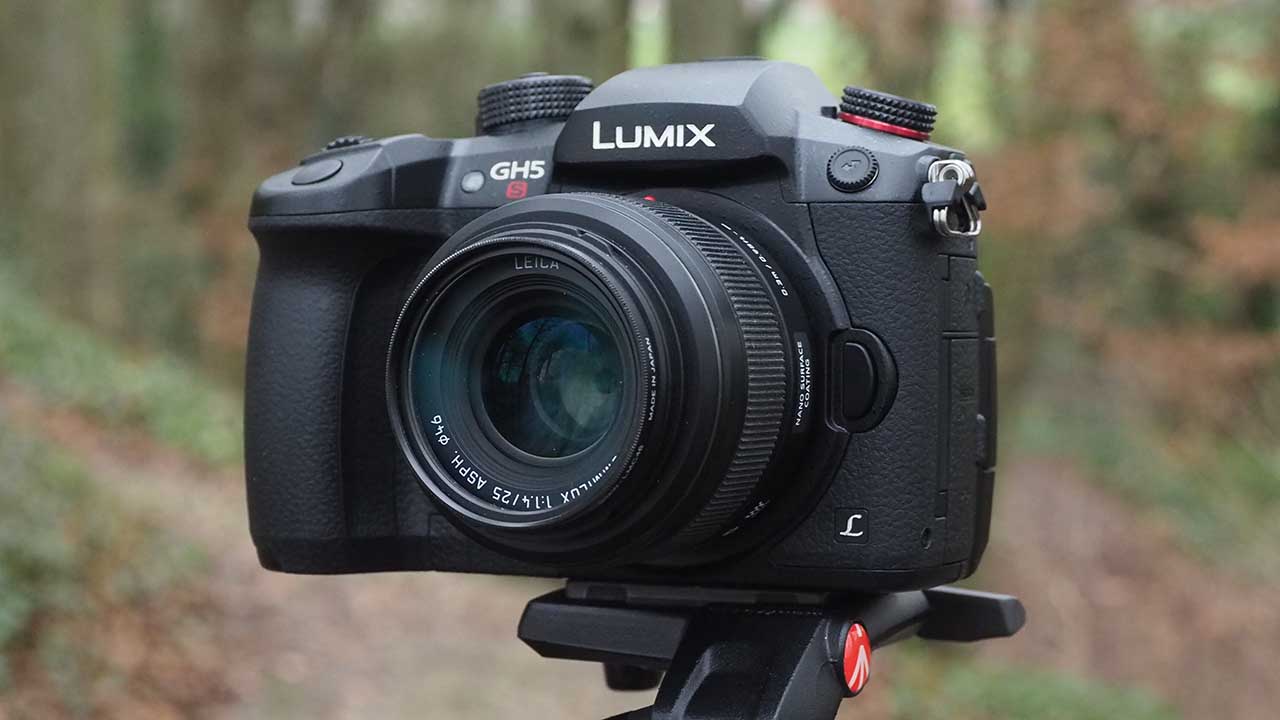
Specification
- Sensor: 10.28MP Multi Aspect Ratio MOS Sensor
- Video: DCI 4K60p and Full HD 1080/240p Video
- Log Mode: V-Log L Gamma and HDR Hybrid Log Gamma
- Video Quality: Internal 4:2:2 10-Bit Long GOP
- Viewfinder: 0.76x 3.68m-Dot OLED Viewfinder
- Sensitivity: Dual Native ISO 400 and ISO 2500
- Touchscreen: 3.2" 1.62m-Dot Free-Angle Touchscreen
- Memory & Connectivity: Dual UHS-II SD Slots; Wi-Fi & Bluetooth
- Stills: 12-fps Cont. Shooting and 4K PHOTO Modes
If video is your bag, the GH5S is not only the best Panasonic camera for video but arguably the best camera for video you can buy. While many videographers have hailed the Panasonic GH5 as the ultimate video camera, Panasonic is now calling it the ‘ultimate hybrid camera’ with the GH5S getting ‘ultimate video camera’ status.
Like the GH5, the GH5S can shoot Cinema 4K (4096 x 2160) footage. However, whereas the GH5 is limited to 24p at this resolution, the GH5S can shoot at 60p, 50p, 30p, 25p or 24p. Furthermore, if you opt for 30p, 25p or 24p, you can shoot that C4K footage in 4:2:2 10-bit for a greater range of colours and smoother tonal gradations.
If high bitrates are important, the GH5S can record 4:2:2 10-bit 400-Mbps All-Intra in 4K 30p, 25p or 24p and C4K 24p. While C4K and 4K footage can be recorded at up to 60fps, Full-HD (1920 x 1080) footage can be recorded at up to 240fps, giving 10x slow motion playback.
Inside the GH5S is a new 10.2Mp High Sensitivity MOS sensor coupled with a Venus Engine. Although it has the Micro Four Thirds (MFT) lens mount, its sensor is a little larger than is found in most MFT cameras because it’s a Multi Aspect Ratio unit that enables the same diagonal angle of view to be recorded whatever the aspect ratio of the image or video.
What’s more, in a new move for a Panasonic G-series camera, each pixel on the GH5S sensor has two analogue circuits and this enables two base sensitivities (ISO 400 and ISO 2500). This Dual Native ISO Technology and the lower pixel count of the GH5S are designed to improve dynamic range and help keep noise in check even in very low light when sensitivity (ISO) is high.
£1829
$1997.99For
- Impressive video specification
- Timecode IN/OUT
- V-Log L pre-installed
Panasonic Lumix GH5 II
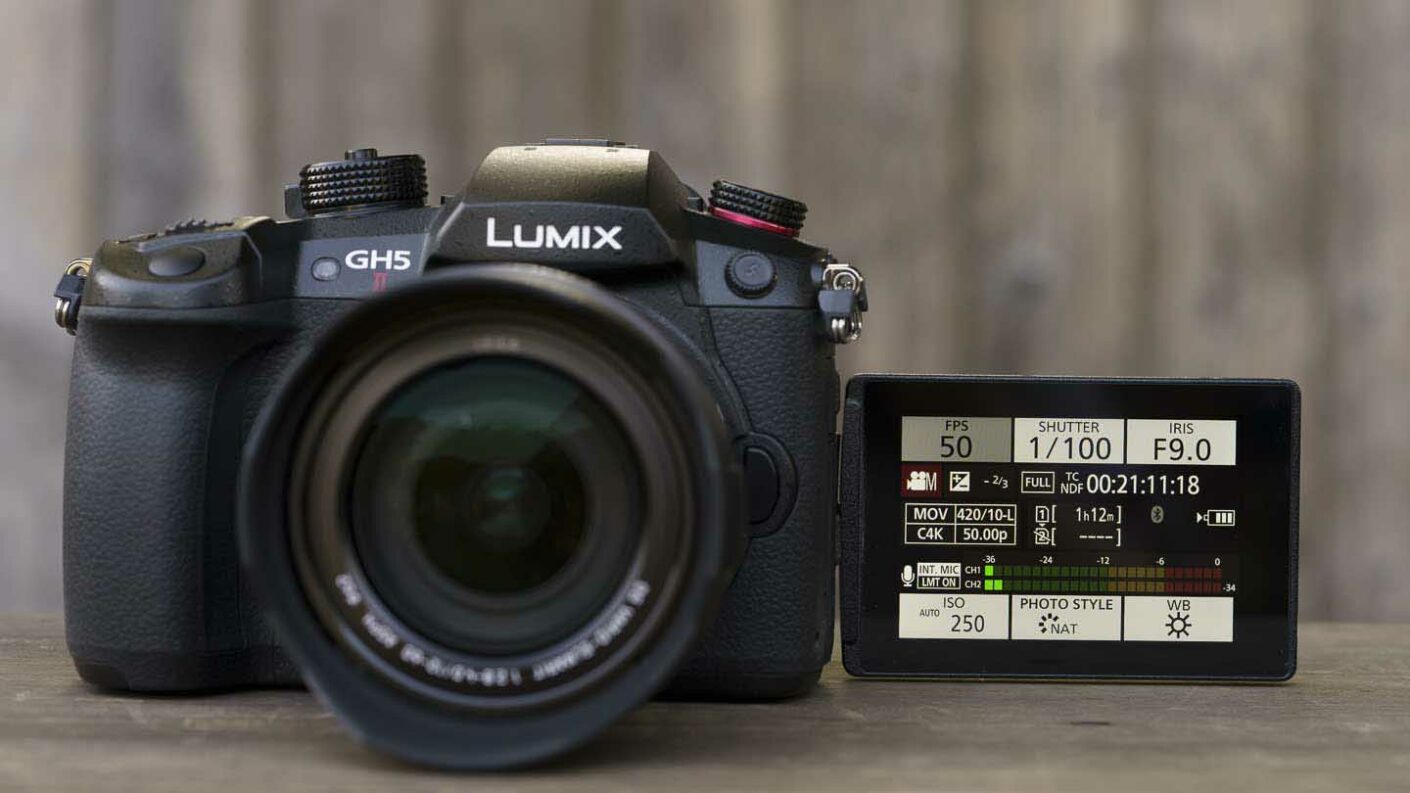
Specification
- Camera type: Micro Four Thirds mirrorless
- Announced: 25th May 2021
- Sensor: 20.3 Mp Live MOS Sensor
- Maximum video resolution: C4K (4096x2160)
- Video Quality: 59.94p, 200Mbps (4:2:0 10-bit LongGOP) (H.265/HEVC, LPCM, High-Res Audio), 59.94p, 150Mbps (4:2:0 8-bit LongGOP) (H.264/MPEG-4 AVC, LPCM, High-Res Audio), 29.97p, 400Mbps (4:2:2 10-bit ALL-Intra) / 150Mbps (4:2:2 10-bit LongGOP) / 100Mbps (4:2:0 8-bit LongGOP) (H.264/MPEG-4 AVC, LPCM, High-Res Audio), 23.98p, 400Mbps (4:2:2 10-bit ALL-Intra) / 150Mbps (4:2:2 10-bit LongGOP) / 100Mbps (4:2:0 8-bit LongGOP) (H.264/MPEG-4 AVC, LPCM, High-Res Audio)
- Video format: MOV: H.264/MPEG-4 AVC, H.265/HEVC , MP4: H.264/MPEG-4 AVC, H.265/HEVC
- Log Mode: V-Log L pre-installed
- Sensitivity range: Stills: ISO 200-25600 (expandable to ISO 100-25600), Video: ISO 200-12800 (expandable to ISO 100-12800)
- Stabilisation: 5-axis Dual IS II giving 6.5EV shutter speed compensation
- Viewfinder: 3.68m-dot OLED with 60/120fps refresh rate
- Touchscreen: 3-inch 1.84m-dot Free-angle touchscreen
- Storage: Dual UHS-II SD slots
- Maximum stills continuous shooting rate: AFS/MF: 12 frames/sec, AFC: H: 9 frames/sec (with Live View), 6K Photo: 30 frames/sec, 4K Photo: 60 frames/sec, 30 frames/sec
- Dimensions: 138.5 x 98.1 x 87.4 mm / 5.45 x 3.86 x 3.44 inch (excluding protrusions)
- Weight: 727g / 1.60 lb with SD card and battery
The original Panasonic GH5 has been incredibly popular with videographers since it was announced back in 2017. And while it doesn’t make a dramatic upgrade on the GH5, the Panasonic GH5 II puts ticks in lots of boxes. It’s a very capable video camera and a competent stills camera, making it ideal for modern content creators who don’t need a higher resolution sensor.
With the same 20.3Mp sensor as is inside the GH5 and the same processor that’s in the S1H, the GH5 II can capture 10-bit 4:2:0 C4K (4096 x 2160) video at up to 60fps and 200Mbps or 10-bit 4:2:2 C4K at up to 30fps and 400Mbps. If an external recorder is connected via HDMI, it’s also possible to record C4K 4:2:2 10-bit 60p video externally while simultaneously recording in 4:2:0 to the card in the camera. There’s also a selection of 4K and 6K anamorphic modes.
Although the GH5 II cannot shoot raw video, V-Log L is pre-installed which means that it’s possible capture very flat footage that’s well-suited to grading. Helpfully, there’s a Log Assist mode so you can assess the footage more easily when you’re shooting in V-Log L. It’s also possible to display a waveform or vector scope to guide exposure.
Panasonic has enhanced the GH5 II’s live streaming capability and it can stream via a wired or wireless connection to a router or a smartphone running Panasonic’s Lumix Sync app. Panasonic has also promised a firmware update by the end of the year to enable wired RTP/RTSP streaming.
£1499
$2100For
- Extensive array of features
- Excellent stabilisation system
- Simple live streaming via smartphone
Fujifilm X-H2
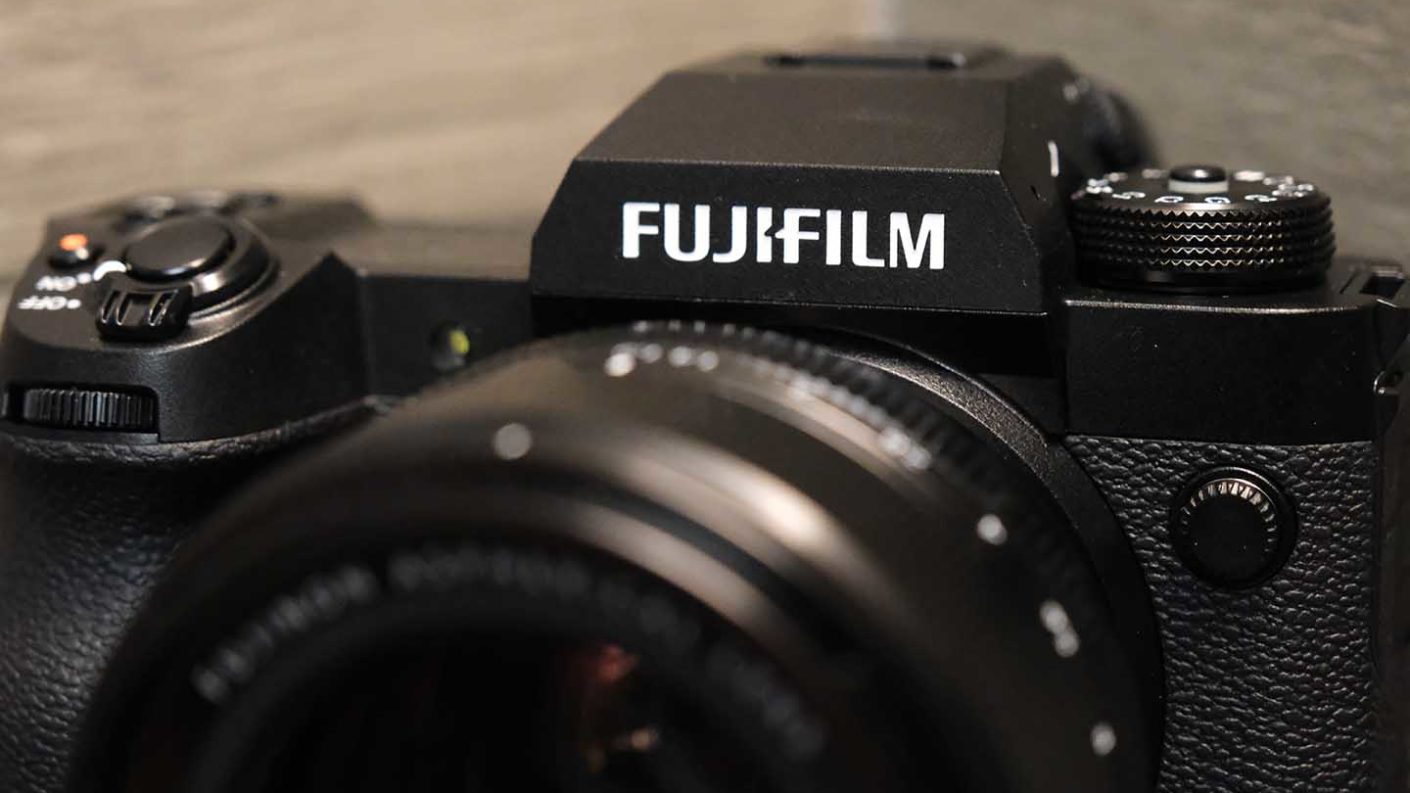
Specification
- Camera Type: Mirrorless
- Announced: September 8, 2022
- Lens Mount: Fujifilm X
- Sensor: 40-megapixel X-Trans5 BSI APS-C Imaging Sensor
- Processing Engine: X-Processor 5
- Video: 8K at 30p, 6.2K at up to 30p, DCI4K at up to 60p, HD at 240p Apple ProRes internally in 10-bit at 4:2:2
- Sensitivity: ISO 125 to 12,800 (expandable to ISO 64 to 51,200)
- IBIS: Up to 7 stops of Internal Body Image Stabilization
- Max Shutter Speed: 1/180,000 Max Shutter speed with electronic shutter
- Continuous Shooting: 15fps with mechanical shutter, 20fps with electronic shutter
- Viewfinder: 5.76-million-dot EVF with 0.8x magnification
- Rear Screen: 1.62 million-dot vari-angle LCD
- Memory: One CFexpress Type B memory card slot and one UHS-II SD memory card slot
The X-H2 is the high-resolution option in Fujifilm’s flagship X-H series. But along with its 40-million-pixel sensor is the ability to record internal Apple ProRes 10-bit 4:2:2 video in 8K at up to 30p. This gives users not only incredible high-resolution footage but also the ability to down-sample for higher quality 4K.
Along with that you can also shoot 6.2K video at up to 30p, DCI4K at 60p, 4K at 30p and Full HD at 240fps for slow-motion video.
With an Atomos Ninja V+ or Blackmagic Design Video Assist Monitor, it’s possible to record Apple ProRes RAW or Blackmagic RAW footage using the X-H2’s HDMI Type A port.
The Fujifilm X-H2 can record continuously for up to 160 minutes in temperatures up to 25C, and you can extend this time to 240 minutes with the optional X-H2 clip-on fast.
There’s also F-Log and F-Log2 colour profiles for those who want to grade their footage. The latter extends the camera’s dynamic range to more than 13 stops.
£1899
$1999 / €2199Fujifilm X-H2S
Specification
- Camera type: Mirrorless
- Announced: 31st May 2022
- Sensor: 26.16Mp APS-C (23.5 x 15.6mm) X-Trans CMOS 5 HS
- In body image stabilisation: 5-axis giving up to 7EV shutter speed compensation
- Processing engine: X-Processor 5
- Lens mount: Fujifilm X
- Sensitivity range: ISO 160-12,800 expandable to ISO 80-51,200
- Autofocus system: Intelligent Hybrid with up to 425 points plus subject detection for humans, animals, birds, automobiles, motorcycles, aeroplanes and trains
- Max continuous shooting rate: Electronic shutter: 40fps for 184 jpegs, 170 lossless compressed raw or 140 uncompressed raw, Mechanical shutter: 15fps for 1000+ jpegs, lossless compressed raw or 1000 uncompressed raw
- Max video resolution: 6.2K (6240x4160) 29.97/25/24/23.98p, DCI 4K (4096x2160) 59.94/50/29.97/25/24/23.98p or 120/100p in High Speed mode, 4K (3840x2160) 59.94/50/29.97/25/24/23.98p or 120/100p in High Speed mode
- Viewfinder: 0.5 inch 5.76 million-dot OLED Color Viewfinder with 100% coverage Eyepoint: approx. 24mm Diopter adjustment: -5~+3m-1 Magnification: 0.8× with 50mm lens
- Screen: Vari-angle 3-inch LCD with 1.62-million dots
- Dimensions: 136.3 x 92.9 x 84.6mm
- Storage: Dual: 1x CFexpress type B, 1x DS/SDHC/SDXC UHS-II
- Weight: 579g (body only), 660g with battery and card
The Fujifilm X-H2S builds on the X-H1’s video capability with the benefit of technological advances to give greater resolution, a wider range of frame rates, greater bit depth and less rolling shutter (with full sensor readout in 5.4msec or 1/180sec), plus in-camera Apple ProRes (ProRes 422 HQ, ProRes 422 and ProRes 422 LT) recording.
For example, 6.2K 29.97p and 4K 4:2:2 10 bit video can both be recorded internally with no crop. Alternatively, DCI 4K video can be recorded at 120p/100p with a 1.29x crop while FHD 17:9 or 16:9 video can be shot at 240P/200p with a 1.38x crop.
There’s also F-Log2 for recording video with up to 14 stops of dynamic range, but this means using a sensitivity setting of at least ISO 1250. With the original F-Log, which is also available, it’s ISO 650 and there’s up to 12 stops of dynamic range.
At 25°C, you can expect to shoot 4K 60p video for around 240 minutes before the camera overheats. In hotter climes this drops to around 15 minutes, but Fujifilm has also introduced a fan that can be connected onto the back of the X-H2S to help keep it cool and extend 4K 60P recording to 51 minutes.
£2499
$2499For
- 40fps continuous shooting with AF
- Subject detection at 40fps and during video
- 6.2K video
Nikon Z7 II
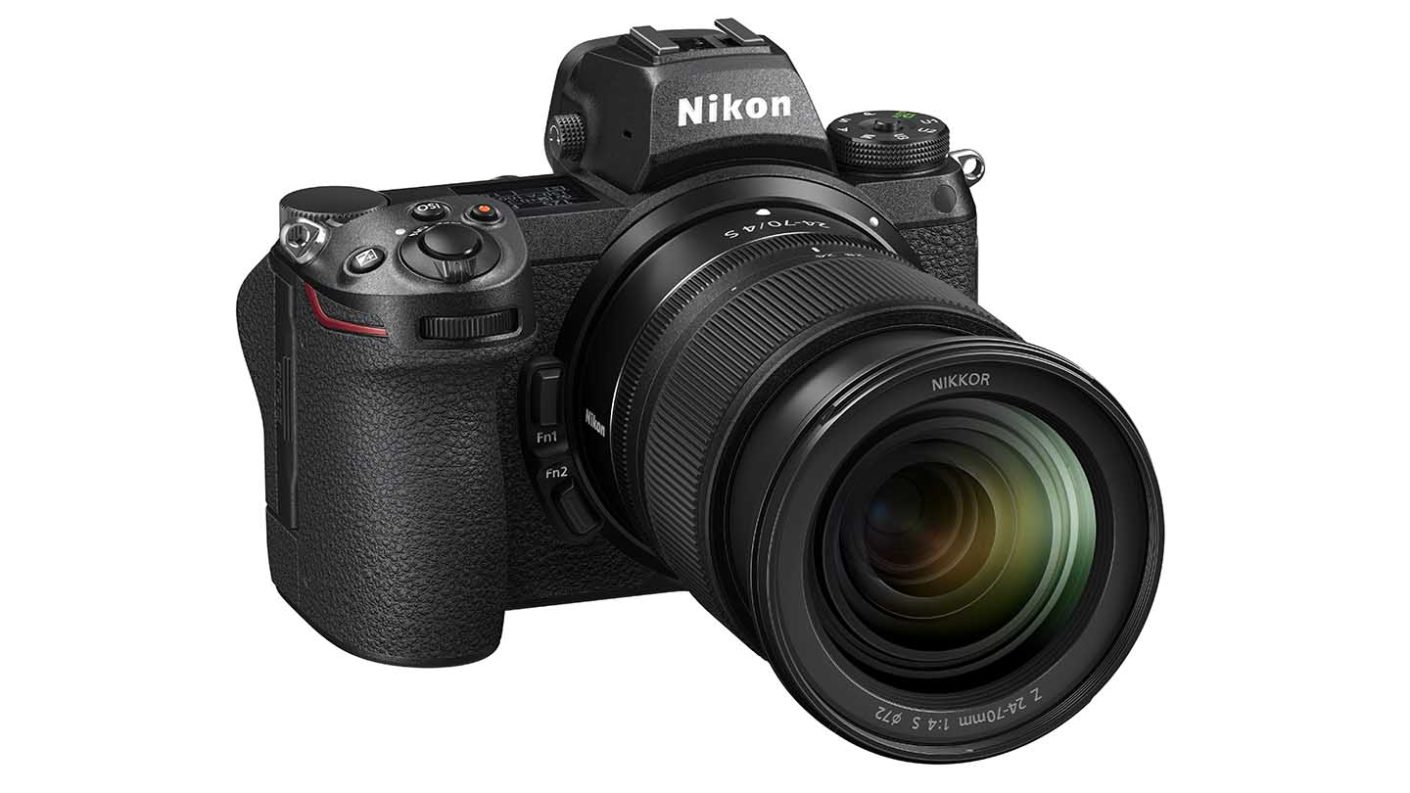
Specification
- Camera type: Full-frame mirrorless camera
- Announced: 14th October 2020
- Lens mount: Nikon Z
- Sensor: Full-frame (FX 35.9 x 23.9mm) 45.7MP backside illuminated (BSI) sensor
- Processing engine: Dual Expeed 6
- Stabilisation: 5-axis in-body VR
- Sensitivity: ISO 64-25,600, expandable to ISO 32-102,400
- Maximum continuous shooting rate: 10fps for up to 200Jpegs or 77 12-bit uncompressed raw files, 9fps with 14-bit raw files
- Autofocus system: Hybrid with phase and contrast detection
- Phase detection points: 493
- Video resolution: 4K (3840 x 2160) 60/50/30/25/24p, Full-HD (1920 x 1080) 120/100/60/50/30/25/24p, Slow-motion mode 1920 x 1080 30p x4/25p x4/24p
- Viewfinder: 0.5-inch 3.69-million-dot electronic viewfinder
- Screen: 3.2-inch 2,100,000-dot tilting touch-screen
- Storage: Dual slot 1 XQD/CFexpress and 1 SD/SDHC/SDXC
- Dimensions (W x H x D): 134 x 100.5 x 69.5mm / 5.3 x 4 x 2.8-inches
- Weight: 705g with battery and memory card but without body cap, 615g body only
While the 45.7Mp Nikon Z7 II has a lot in common with the excellent Nikon Z7 and uses much of the same technology (including the same sensor), the mark II camera has a second memory card slot which means it addresses the main concern that photographers had about the original camera. One slot accepts XQD or CFexpress cards while the other is for SD-type cards and is UHS-II compliant
Nikon also doubled the Z7 II’s processing power in comparison with the Z7 II by giving it two Expeed 6 processing engines. This enabled a boost in the continuous shooting rate from 9fps to 10fps and enables 4K shooting at 60P.
Like the Z7, the Nikon Z7II can record 4K UHD (3840 x 2160) video. However, the maximum frame rate is boosted from 30P to 60P, which is great news for slow-motion fans.
As before, it’s also possible to shoot Full HD video at up to 120p.
If you record to a memory card in the Z7II, the video is 8-Bit, but connecting an external storage device via the HDMI port enables the video quality to be increased to 10-bit 4:2:2 with (or without) N-Log.
N-Log is useful if you want to grade your footage post-capture, or if you need to match the footage to that from another camera. Handily, timecode is available to help with editing video from multiple cameras.
With a compatible Atomos recorder connected, the Z7II can record video as Apple ProRes Raw which means you get the full benefit of the camera’s data gathering potential. However, this feature needs to be unlocked by a Nikon service centre at a cost of £179/$199.
Focus peaking and zebra display are also available to help with nailing the focus and exposure.
£2999
€3442 / $2996.95For
- High-quality sensor
- Excellent user interface and control layout
- Weatherproof build
Panasonic S1H
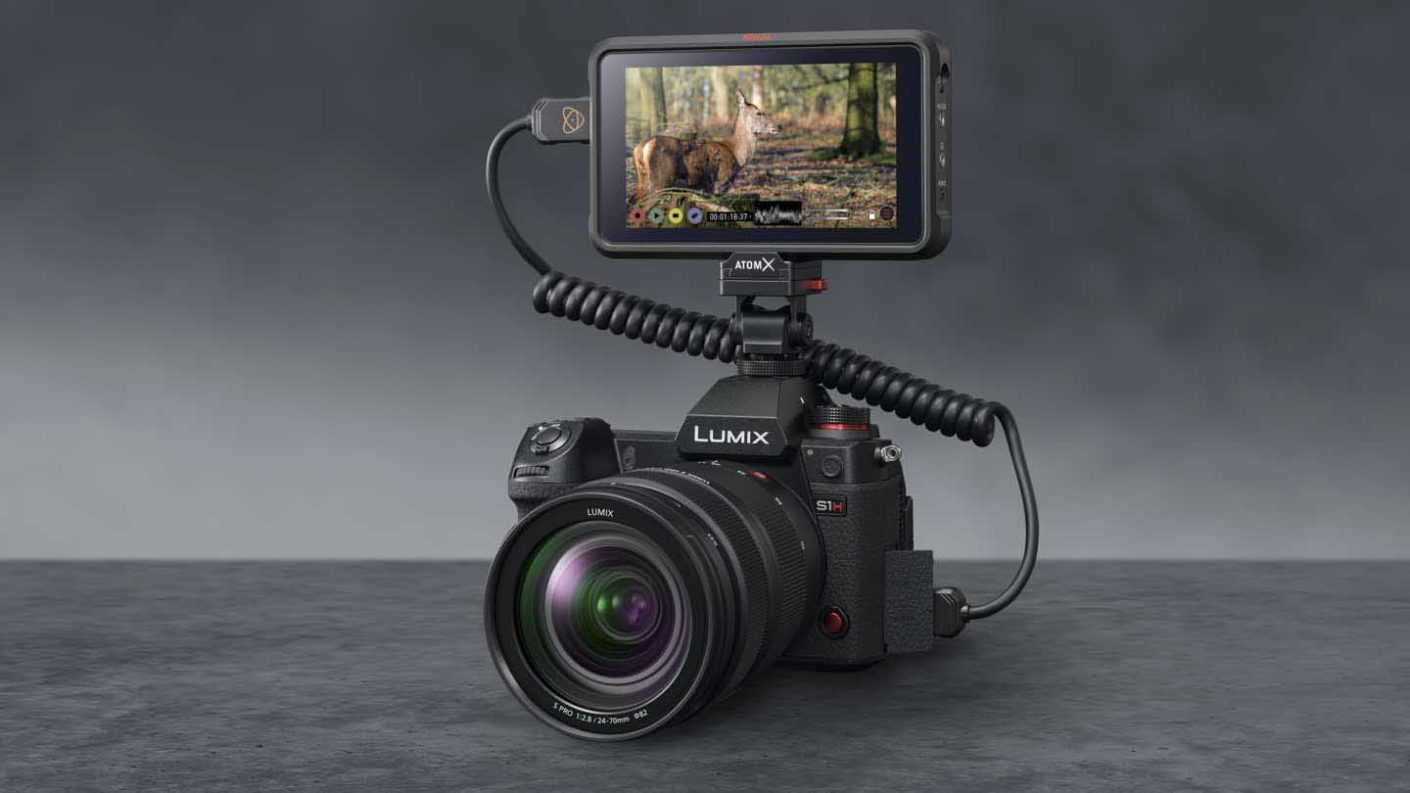
Specification
- Sensor: 24.2MP full frame CMOS
- Video: 6K (5.9K) 3:2 24p, 5.9K 16:9 up to 30p, C4K/4K UHD up to 60p
- Autofocus: 225-area DFD contrast AF
- ISO: Dual Native ISO; 100-51,200 (50-102,400 exp.)
In early 2020 Panasonic announced that via a strategic partnership with Atoms it had developed new firmware for the Lumix S1H that enables the camera to output a maximum 5.9K/29.97p RAW video data to the Atomos Ninja V.
Shortly after this announcement, the Panasonic S1H became the first ‘Netflix-approved’ camera on the market.
The S1H is aimed at serious filmmakers, but its price tag is under the the £4,000 threshold, and it packs some serious firepower.
Panasonic’s flagship full-frame mirrorless camera offers 6K video recording and 10-bit 60p 4K/C4K, aided by a 35.6 x 23.8mm, 24.2-megapixel full-frame CMOS sensor. It can record 6K at 24p at a 3:2 aspect ratio, 5.9K at 30p in 16:9, as well as 10-bit 4K/Cinema 4K footage at 60p using the Super 35mm image area.
As if that isn’t enough, it can record 4:2:2 10-bit 4K footage at 30p over the full image area.
The Panasonic S1H also delivers 14 stops of dynamic range – the same as Panasonic’s cinema cameras – along with a slew of other video specifications aimed at professionals such as Panasonic’s V-Log/V-Gamut log modes, HDR in HLG (Hybrid Log Gamma), 4:2:2 10-bit HDMI output and Anamorphic 4:3 modes.
For
- Shoots 6K raw
- Records 4K at 60p
- 14 stops dynamic range
Blackmagic Design Pocket Cinema Camera 6K Pro
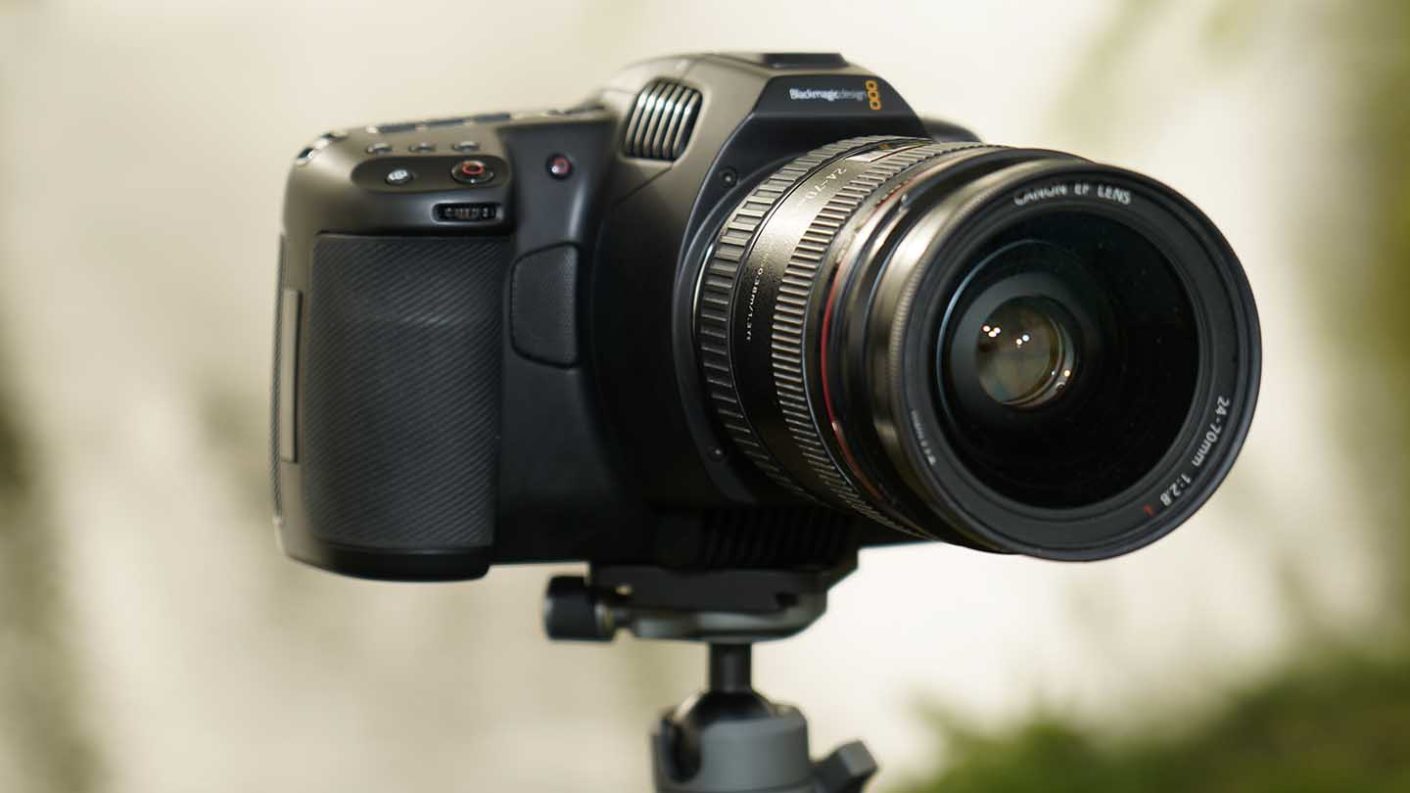
Specification
- Effective Sensor Size: 23.10mm x 12.99mm (Super 35)
- Lens Mount: Active EF mount.
- Lens Control: Iris, focus and zoom on supported lenses.
- Dynamic Range: 13 Stops
- Dual Native ISO: 400 and 3200
- Shooting Resolutions: 6144 x 3456 (6K) up to 50 fps, 6144 x 2560 (6K 2.4:1) up to 60 fps, 5744 x 3024 (5.7K 17:9) up to 60 fps, 4096 x 2160 (4K DCI) up to 60 fps, 3840 x 2160 (Ultra HD) up to 60 fps, 3728 x 3104 (3.7K 6:5 anamorphic) up to 60 fps, 2868 x 1512 (2.8K 17:9) up to 120 fps, 1920 x 1080 (HD) up to 120 fps
- Built in ND Filters: Four position ND filter with clear, 2‑stop, 4‑stop and 6‑stop IR ND filters.
- Focus: Auto focus available using compatible lenses.
- Screen Dimensions: 5-inch 1920 x 1080.
- Screen Brightness: 1500nits
- Total Video Outputs: 1 x HDMI up to 1080p60
- Analog Audio Inputs: 2 x mini XLR analog switchable between mic with phantom power support and line level (up to +14dBu). 1 x 3.5mm Stereo Input. Can also be used for Timecode input.
- Media: 1 x CFast card slot, 1 x SD UHS‑II card slot, 1 x USB-C 3.1 Gen 1 expansion port for external media for Blackmagic RAW and ProRes Recording.
The Blackmagic Design Pocket Cinema 6K Pro is something of an oddity. It’s a full-blown cinema camera that offers filmmakers the Hollywood experience in a small and relatively inexpensive body.
When it comes to looks and handling, the BMPCC 6K Pro is more mirrorless than camcorder, but this is no stills camera as the quality of footage it captures is staggeringly good.
In use, the ergonomics of the body makes sense and makes for comfortable handling even if I can’t get on with the futuristic design.
When you get into filming, the camera comes into its own, and you can see why these cameras have created such a buzz in the independent filmmaker’s community.
The camera has everything you need, and as you rummage through the menu’s the camera opens up a whole world of filmmaking potential.
Buttons are kept to a minimum, but there is plenty of scope for customising their use, which is well worth doing for the time it saves.
Filming with the BMPCC 6K Pro is smooth and fluid, and once you familiarise yourself with the balance of control, the results obtained are exceptional.
Aside from the odd design, there’s little to fault with this outstanding camera; I wish for the same camera with a box design and flip-out screen, which would make this perfect.
£1879
$2495For
- Packed with features
- Incredible quality video
- Unbelievable price
GoPro Hero11 Black
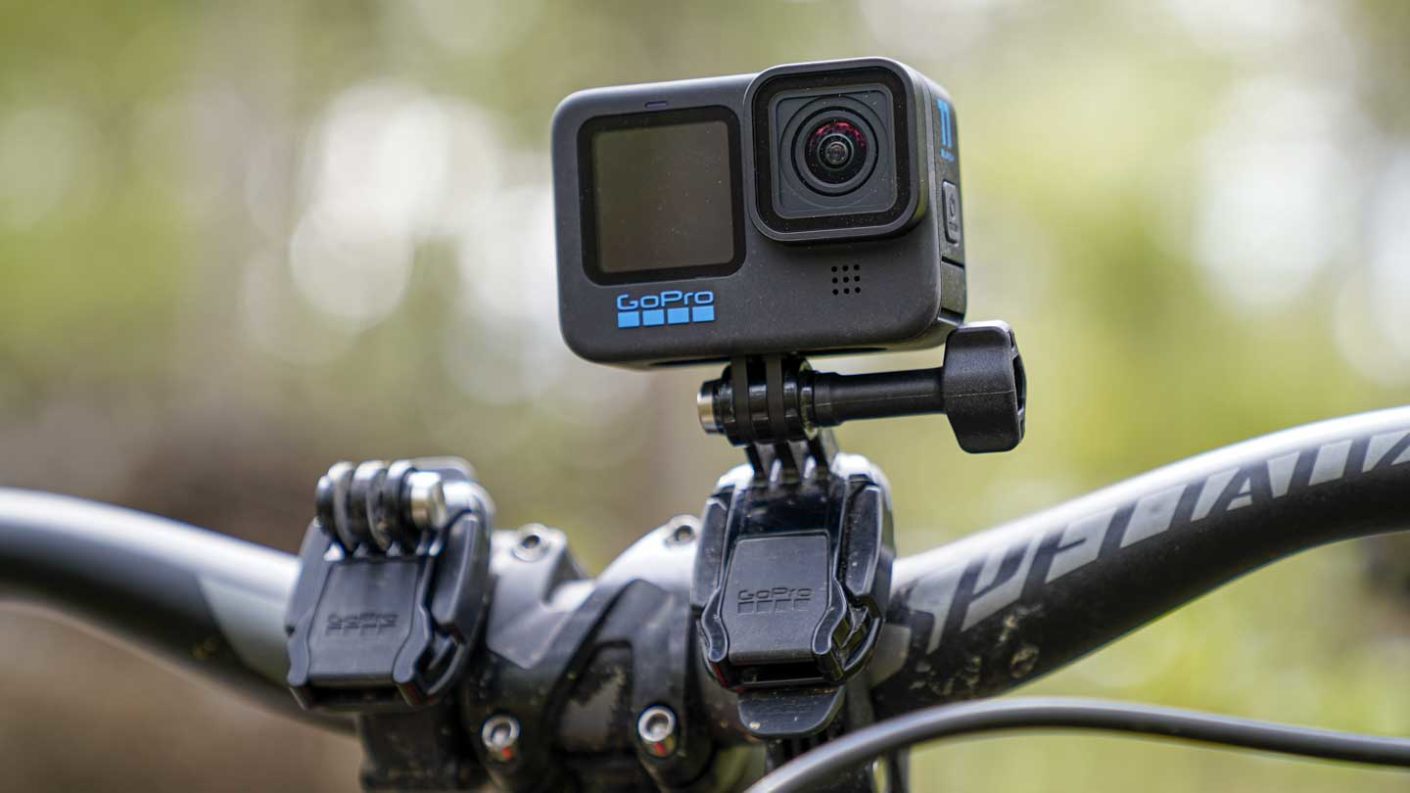
Specification
- Imaging Sensor: 1/1.9-inch 8:7 aspect ratio
- Max Resolutions and framerates: 5.3K60, 4K120, 1080p240
- Color depth: 10-bit
- Image Stabalisation: HyperSmooth 5.0 and 360º Horizon Lock
- Touch Screen display: Yes
- Photo reolsution: 27mp
- Auto tagging of footage: Yes
- Enduro battery: Included
- Dimensions: 71.8x33.6x50.8mm
- Weight: 154g
With the GoPro Hero11 Black, the company has refined what remains the best action camera you can buy. For the everyday filmmaker it has the perfect balance of features. If you want to go out and film, then the preset resolution choices are all there, with the ever-popular 4K video at 60fps, which will suit most people.
Outwardly the camera is the same as the 10 Black and the 9 Black, but video quality is notably better than previous releases, offering more detail, tone and colour retained in lower light conditions. This is owing to a new larger sensor.
5.3k can now be recorded in 16:9, which is standard, but you also have the option for 4:3 and 8:7. 8:7 aspect ratio essentially makes full use of the sensor and enables you to crop in on the height so you can recompose to 16:9. This feature is useful when you need to crop out some of the less interesting footage that can be captured with GoPro’s due to their close mounting to objects. This has always been a GoPro thing and a feature that they use as a major selling point over rivals.
The 8:7 aspect ratio gives you even more flexibility over the crop. This 8:7 sensor also enables a new Horizon Lock feature.
£499
$499For
- Great quality video
- Excellent stabilisation and horizon correction
- 4K 120p video for slow motion creation
GoPro Hero10 Black
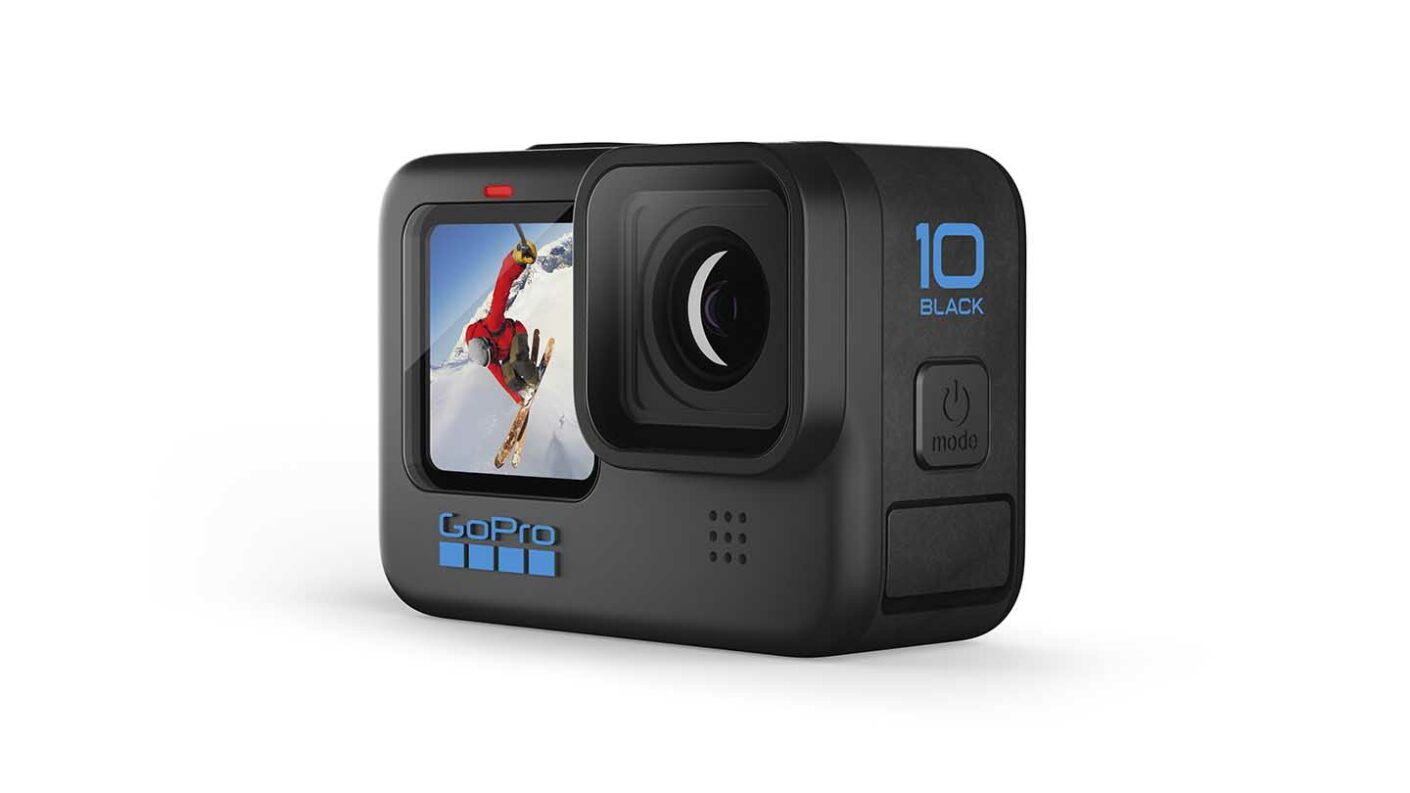
Specification
- Photo : 23MP
- 5.3K: 60fps
- 4K: 120fps
- Video stabalisation: HyperSmooth 4.0
- LCD: Front and Rear (Touch screen)
- Battery: Removable 1720mAh Lithium-Ion
- Slow-mo: 8X
- Waterproof: 33ft (10m)
- Processor: GP2
- Cloud compatibility: Auto upload to GoPro cloud (Sub required)
- Voice control: Yes
- Livestreaming: 1080p
Many have tried, but no other action camera can seem to top the GoPro for its power and versatility. The GoPro Hero10 Black is a refinement of the Hero9 Black and gives a power boost to all of the features. Chief among these refinements is GoPro’s new GP2 processor.
The GP2 chip helps deliver a major boost in frame rates. 5.4K is boosted to 60fps and 4K to 120fps. This essentially means that with the 4K footage, you can record 5 seconds of footage and play that back over 20 seconds with beautifully smooth motion.
This performance boost also delivers better overall responsiveness.
What’s more, the latest version of GoPro’s HyperSmooth 4.0 stabilisation technology builds upon that in the Hero9 Black, meaning you can shoot stable footage in almost any situation.
£499
$499Best features for shooting video
Ease-of-use
Another point that appears obvious is the ease of handling of the camera. Stills photography is often done standing still or working with a tripod but shooting video often involves moving your position, panning or shooting from unorthodox angles, often for significant periods of time. In this case you must be sure the camera you choose feels good in the hand and is something you would be happy to hold and work with for long shoots.
Having a flexible rear LCD screen on your camera can be a boon for filmmakers, especially when shooting in tight areas or at odd angles. A screen that can flip and twist will allow you to view and shoot in a wider range of situations – hence you’ll get more creative footage.
Ask yourself several ease-of-use questions… Is the camera comfortable to hold? Are the controls easy to use? Can you change the important settings with buttons and switches, or do you have to use menus? If there’s a touch screen, does it work well? As with any camera how comfortable it feels in the hand is important.
Creative options
As a rule of thumb try and invest in a camera that will offer you as many creative options as possible. It can be tricky to decipher all of the video resolutions on cameras – for example, Cinema 4K, UHD 4K, Full HD 1080p, 720p and so on – and the frame rates within those. Think about what quality you want from your footage and where it’s going to be shown – for example, if you are a vlogger, who will solely be putting footage online, you will not necessarily need higher resolutions.
The best straightforward advice is to look for a camera that offers a good array of the best possible quality video resolutions – preferably from 4K capability (either Cinema or UHD) downwards with the options of Full HD 1080p and below – combined with a range of shooting options.
For creative options a wide choice of frame rates will allow you to record different ‘styles’ of video. For example, 24fps is often used for cinematic productions and tends to deliver blurred backgrounds with near subjects in focus, whilst 60fps is better for clear imagery across the frame with smooth motion. To simplify matters, if your camera offers most of the 24fps, 36fps, 48fps, 50fps and 60fps options you will have most of the creative tools at your fingertips.
Focusing choices
Another key consideration is the focusing options within the camera for video. Nowadays autofocus for video is being phased in to many models, thanks to technologies such as Canon’s Dual Pixel CMOS AF, and you must consider if you need AF for video or if you prefer to manually focus when shooting.
Manual focusing gives you more control but AF should be considered if you are going to be shooting subjects that move more erratically.
Storage considerations
Anyone shooting video also has to consider the memory card options in their camera. Unsurprisingly, video footage will eat up memory much more rapidly than shooting stills so consider what memory card slots your camera has and what compatibility they offer.
Good advice is to look for cameras with dual memory card slots so that recording can automatically switch to a second card if the first card has been filled up.
Also, look for those cameras that offer compatibility with the latest card technologies – such as C.Fast 2.0, CFexpress or UHS III – as these will offer power and speed for longer filming times and faster ‘read and write’ speeds.
Manual control
Most pro filmmakers will swear by manual control over their cameras as it gives them total control over what they are shooting. Always consider if your camera will let you manually set exposure, white balance and sound levels yourself, or if all such settings are automatic.
Such control may not seem vital to you when you start shooting video but it may be worth investing in a manual control camera so you don’t have to upgrade if your video skills improve quickly.
Lens options
When considering lens options it’s best to think in terms of if the camera will offer you wide, medium and close-up options – the three main, standard ‘shots’ in filmmaking – either via a built-in zoom lens or via interchangeable lenses.
You should also consider what’s the closest focus that a lens can shoot at and what’s the widest aperture you can shoot at. A low number, like f/1.7 or f/2, lets more light in so you can use the camera in dark conditions or get shallow focus effects.
Image stabilisation
Image stabilisation can make pictures less shaky. It’s not essential if you’re going to use a tripod or a good camera support, but it’s very useful for shooting handheld.
The most effective stabilisation, which features in some cameras like the Panasonic GH5, combines lens-based optical stabilisation and sensor-based in-body image stabilisation.
External audio
Recording video with any camera is really only half of the story as any filmmaker will tell you that capturing quality audio is just as vital. To that end consider the audio options offered by the camera you want. For example does it offer a headphone socket so you can monitor audio whilst recording?
Also, will it accept an external mic, either via an in-camera connection or perhaps a hotshoe connection?
Built-in mics are OK on cameras but you really should consider broadening your audio options beyond that via external mics. Remember that if you want to be able to use pro microphones, you need a camera with three-pin XLR inputs.
The camera ‘hub’
Finally, once you’ve taken most of the above considerations into account, think of where you want your camera to fit within your system. If you’re happy with an easy-to-hold camera that offers you the ability to add extra audio, or add some lighting and sound options then that’s fine.
Just remember to consider your camera as the ‘central hub’ of a filmmaking system and decide exactly what you want to add to it. A model that allows for external mics, direct output, monitors and lens changes will deliver you greater options for shooting videos, but you may want to start out with a more simple set-up and build up to this.
Make a wish list
This has been an overview of just a few of the key considerations to keep in mind when buying a camera to shoot video with. Like many choices when shooting video footage your camera choice is a very personal one, based on what you want to shoot and how you plan to go about shooting that.
Do your research and make a ‘wish list’ of what video features you’d like in a camera and what cameras you’d like to try out. Make sure you go out and handle the cameras before buying as a camera may have the spec you love but might not fit well into your hand. Just remember, the best camera for you is the one that puts the fewest limitations on your creativity and is the one that feels most comfortable in your hand.

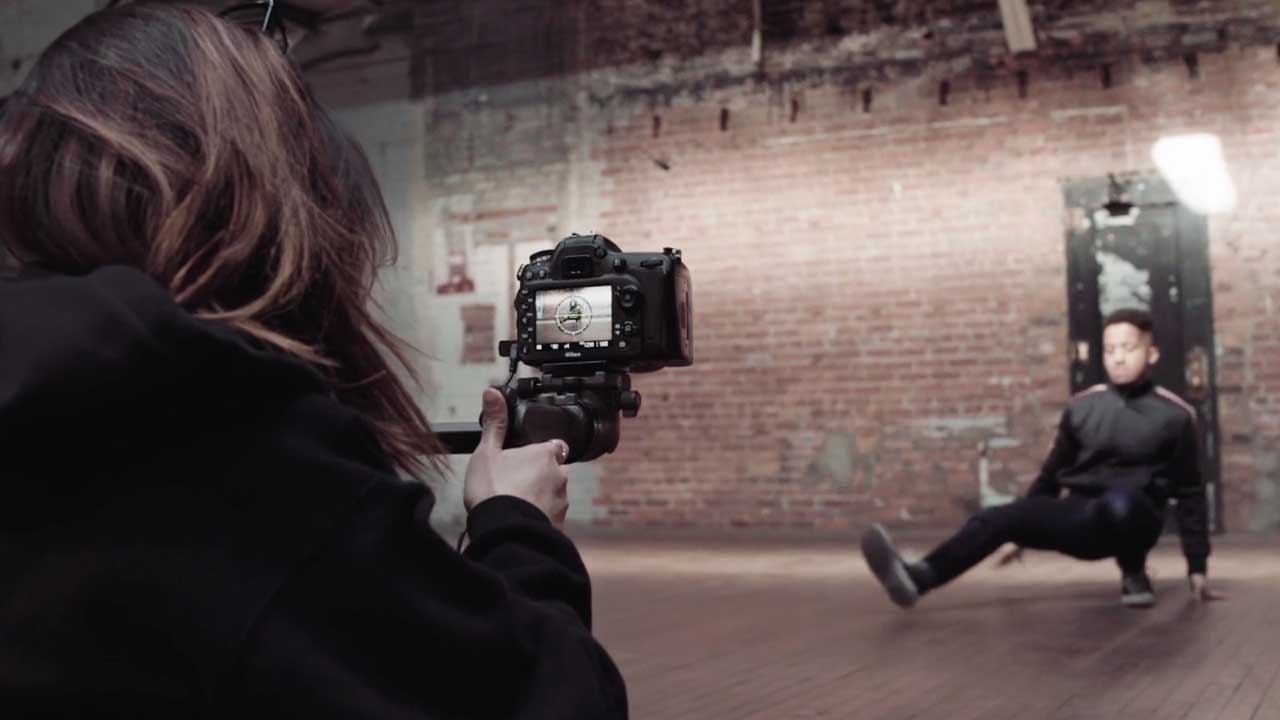



Leave a Reply
You must be logged in to post a comment.